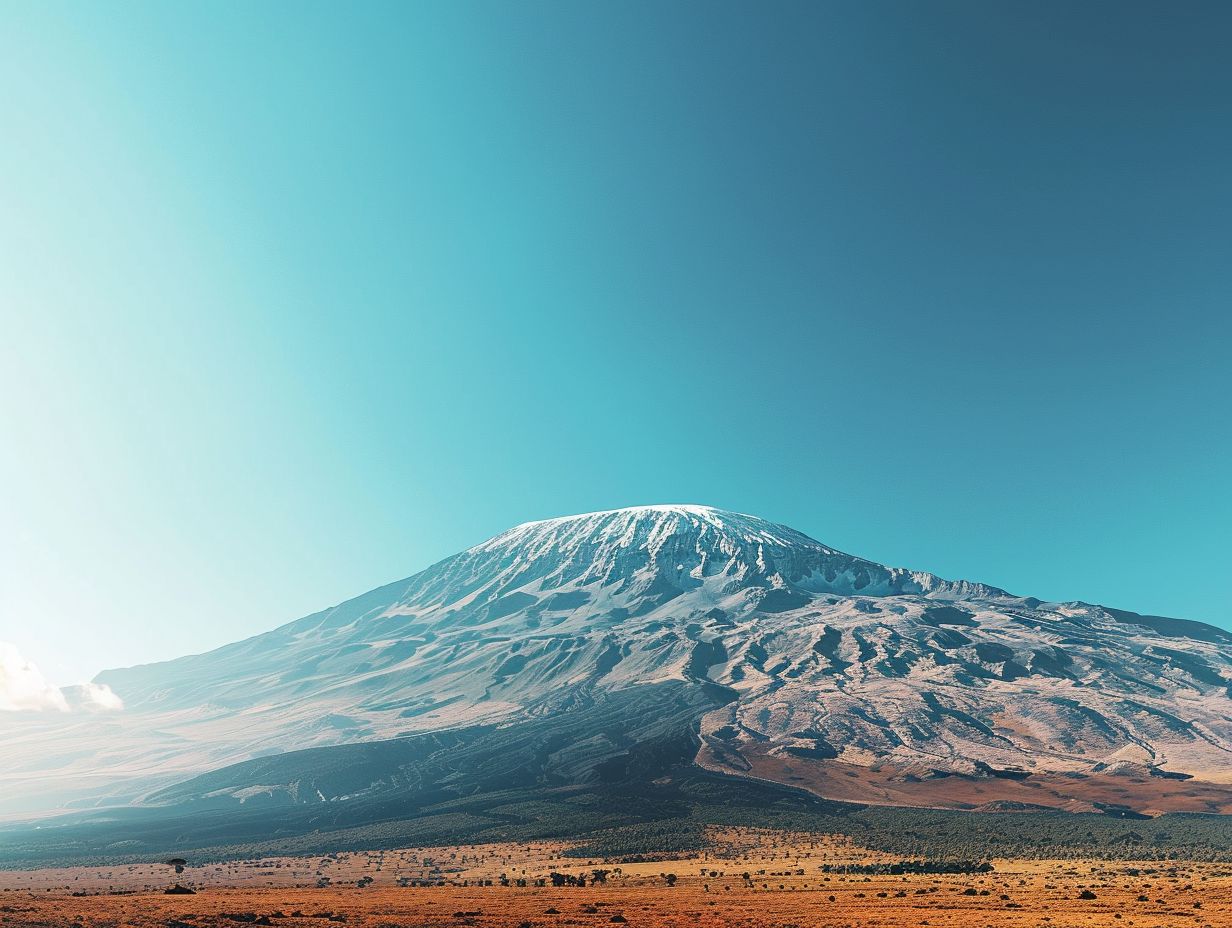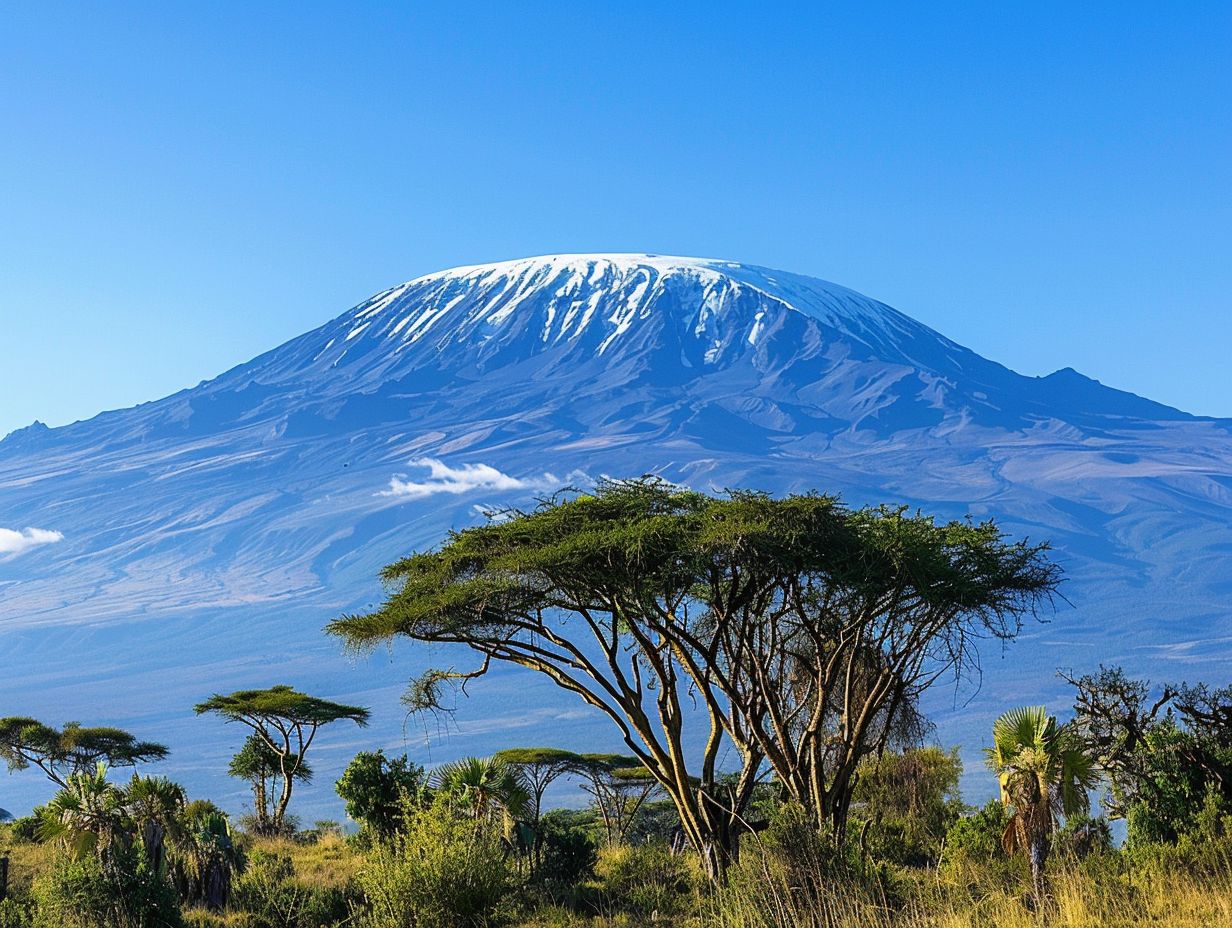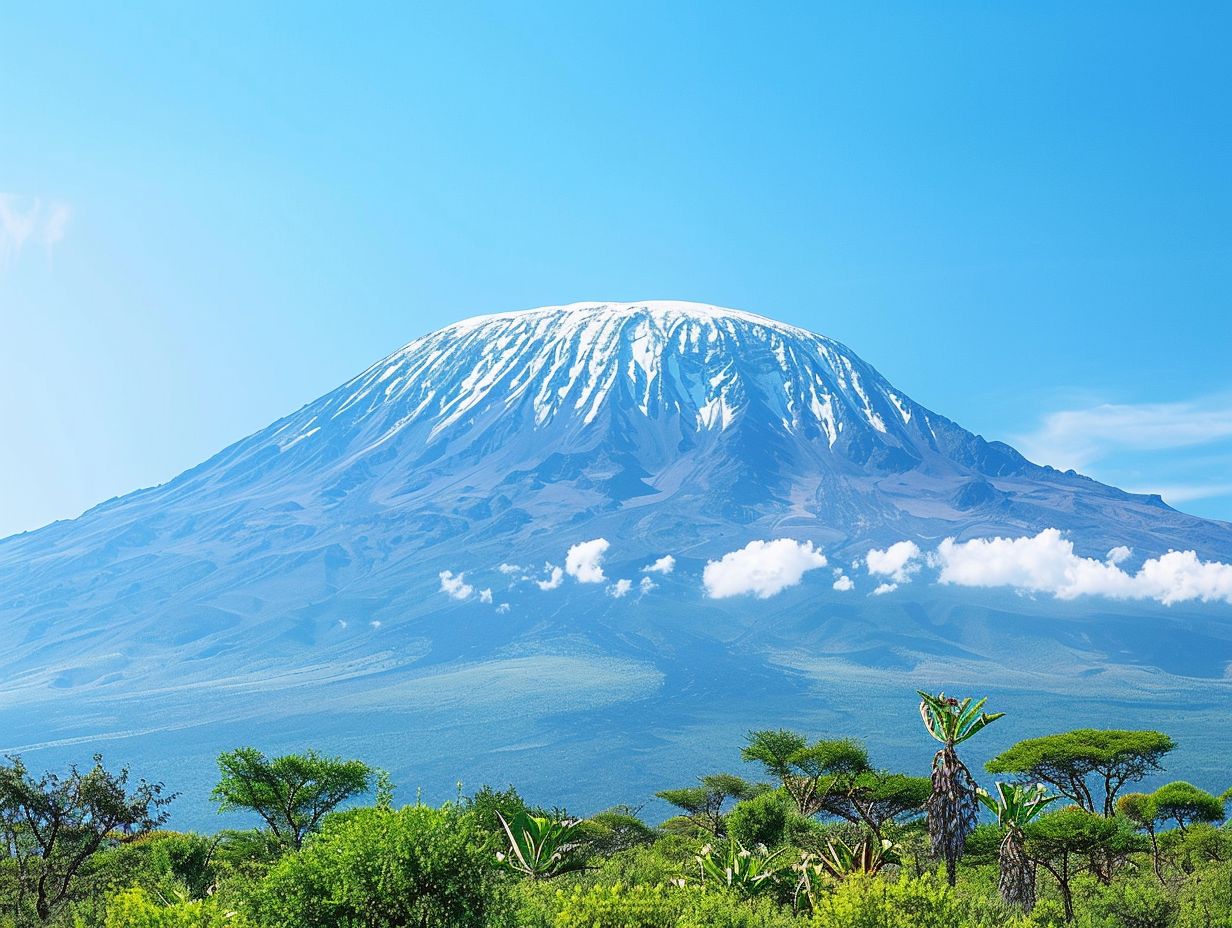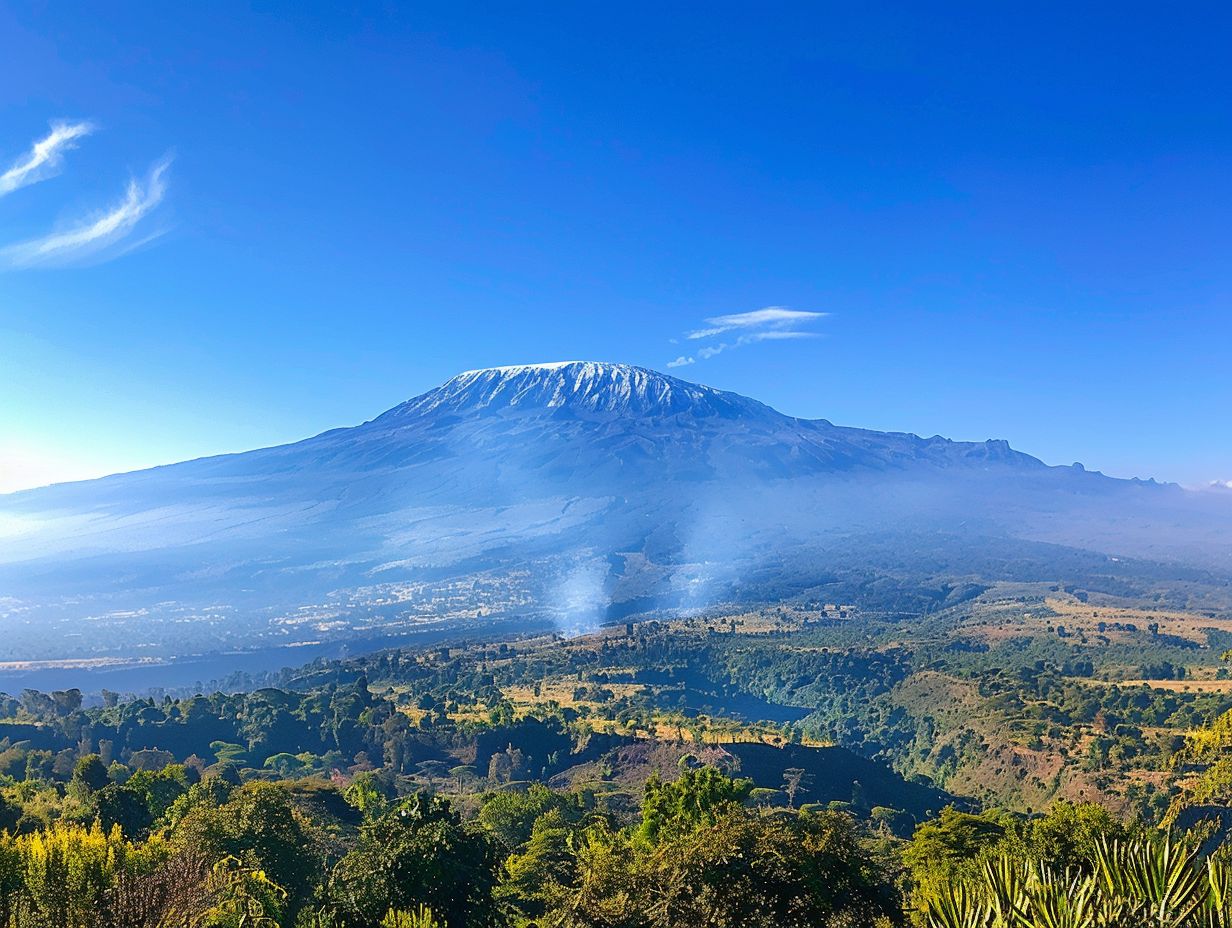
How To Get To Kilimanjaro?
Interested in climbing Kilimanjaro but not sure where to start? This article has got you covered.
Explore from the location of Kilimanjaro to the physical fitness level required, gear and equipment needed, vaccinations and medications recommended, and safety precautions to take. We will guide you through all the essential information for your trek.
Find out about the different routes to Kilimanjaro, the best time to climb, accommodation options, and how to book your trek.
Prepare to conquer Africa’s highest peak!
Key Takeaways:

- Proper physical fitness and gear are essential for a successful climb to Kilimanjaro.
- Choosing the right route and time of year can greatly impact your experience on Kilimanjaro.
- Booking a trek with a reputable company and following safety precautions are crucial for a safe and enjoyable climb to Kilimanjaro.
Where is Kilimanjaro Located?
Kilimanjaro is a dormant volcano in Tanzania, East Africa, near the border with Kenya. It is the highest mountain in Africa and one of the most iconic peaks in the world.
Situated in the northeastern part of Tanzania, Kilimanjaro stands tall at approximately 19,341 feet (5,895 meters) above sea level. The mountain is composed of three volcanic cones: Kibo, Mawenzi, and Shira.
Its prominent location offers breathtaking views of the surrounding plains and savannahs below. Kilimanjaro’s significance extends beyond its height, as it plays a crucial role in the local ecosystem, contributing to the biodiversity of the region. The nearby towns and villages, such as Moshi and Arusha, serve as starting points for many adventurous treks to the peak.
How to Prepare for Climbing Kilimanjaro?
Preparing for a Kilimanjaro climb requires careful planning and physical readiness. Aspiring climbers need to focus on fitness, equipment, route selection, and budgeting.
-
What Physical Fitness Level is Required?
Climbing Kilimanjaro demands a good level of physical fitness due to the altitude and challenging terrain. Stamina, strength, and endurance are crucial for a successful summit.
Endurance plays a vital role in tackling the long hours of trekking each day, often in varying weather conditions. Stamina is necessary to maintain a steady pace and overcome the steep ascents. Additionally, strength training can help in carrying your gear and navigating the rocky paths.
Altitude acclimatization is essential to adapt your body to the reduced oxygen levels at higher elevations, preventing altitude sickness. Proper training regimes focusing on cardiovascular health and lung capacity are key to prepare for Kilimanjaro’s demanding environment.
-
What Gear and Equipment Do You Need?
Essential gear and equipment for climbing Kilimanjaro include sturdy hiking boots, warm clothing layers, a quality sleeping bag, trekking poles, and a headlamp for early morning starts.
It’s important to pack moisture-wicking base layers to regulate body temperature and prevent sweat accumulation.
Don’t forget a reliable backpack with adjustable straps for comfort during long treks. A portable water filtration system and high-energy snacks are crucial to stay hydrated and fueled on the journey.
For safety, carry a comprehensive first aid kit, emergency blanket, and a GPS device or map for navigation. Properly fitted sunglasses with UV protection are also essential to shield your eyes from the sun’s glare and snow reflection.
-
What Vaccinations and Medications Are Recommended?
Before climbing Kilimanjaro, it is recommended to have vaccinations for yellow fever, hepatitis A and B, typhoid, and take medications for altitude sickness prevention and malaria prophylaxis.
Altitude sickness, a common concern on Kilimanjaro, can be prevented by taking acetazolamide or dexamethasone under medical guidance. Climbers must also be cautious about water purification methods to avoid gastrointestinal infections prevalent in the region.
A tetanus booster shot is advisable due to the potential risk of injuries during the climb. Carrying essential first-aid supplies such as bandages, antiseptic cream, and pain relievers is crucial for any unforeseen incidents on the journey.
How to Choose the Right Route?

Selecting the appropriate route for your Kilimanjaro climb is crucial for a safe and enjoyable experience. The choice of route impacts the duration, difficulty level, and scenery of the journey.
-
What Are the Different Routes to Kilimanjaro?
Kilimanjaro offers multiple routes to the summit, including Lemosho, Marangu, Machame, and Rongai. Each route presents unique challenges and scenic vistas.
For instance, the Lemosho route, known for its beautiful scenery, usually takes around 7-8 days to complete, offering a diverse range of landscapes from lush rainforest to open moorland.
Marangu, on the other hand, dubbed the ‘Coca-Cola’ route, is one of the more popular paths, known for its hut accommodation options.
The Machame route is a bit more challenging but rewards trekkers with stunning views and varied terrain, usually completed over 6-7 days.
Rongai, the only route that approaches Kilimanjaro from the north, provides a unique perspective and typically takes around 6-7 days to summit.
-
Which Route is the Most Popular and Why?
The Machame route is the most popular choice for climbers on Kilimanjaro due to its scenic beauty, varied terrain, and higher summit success rates.
Known as the ‘Whiskey Route,’ Machame is renowned for offering a diverse experience, combining lush rainforest sections with arid alpine deserts. Climbers are captivated by the ever-changing landscapes that greet them at each turn, making the journey both physically demanding and visually rewarding.
The route’s longer duration allows for better acclimatization, increasing the chances of a successful summit bid. The descent via Mweka route offers a separate path down, reducing congestion and enhancing the overall experience.
-
Which Route is Best for Beginners?
The Marangu route is often recommended for beginners on Kilimanjaro due to its gradual ascent, hut accommodations, and well-trodden path.
Novice climbers find the Marangu route appealing for its simplicity and ease of navigation, making it a popular choice among those embarking on their first Kilimanjaro expedition.
The availability of hut accommodations along the trail offers comfort and shelter, a comforting thought as climbers adjust to the altitude and physical demands of the trek.
The well-established path of the Marangu route reduces the need for technical climbing skills, providing a more straightforward experience for those new to high-altitude trekking.
What is the Best Time to Climb Kilimanjaro?

The best time to climb Kilimanjaro is during the dry seasons: January to March and June to October. These months offer clearer skies, stable weather, and lower precipitation.
Opting for a Kilimanjaro ascent during these periods reduces the risk of encountering heavy rainfall, making the trek more manageable and enjoyable. In addition, clear skies provide spectacular panoramic views of the surrounding landscape, enhancing the overall experience for climbers. The lower precipitation levels contribute to better trail conditions, ensuring safer passages along the route.
What Are the Weather Conditions Like?
Kilimanjaro experiences diverse weather conditions, ranging from hot and humid at the base to freezing temperatures at the summit. Climbers should be prepared for temperature variations and sudden weather changes.
At the base of Kilimanjaro, temperatures can soar to around 25°C (77°F), while closer to the summit, they can plummet to as low as -7°C (19°F). This drastic change can present challenges for climbers, especially in terms of acclimatizing to the altitude and handling the extreme temperature shifts. Remember, as you ascend, the weather conditions can fluctuate dramatically and unexpectedly.
To add to this, Kilimanjaro sees distinct wet and dry seasons, with the majority of precipitation falling during the two rainy seasons, from March to May and October to December. The wet conditions can make the trek challenging, with slippery paths and increased risk of avalanches. During the dry months, clear skies offer breathtaking views and more stable climbing conditions.
The varying weather patterns on Kilimanjaro demand careful planning, adequate gear, and a flexible mindset to tackle the climatic obstacles during the ascent.
What Are the Crowds Like at Different Times of the Year?

Crowd levels on Kilimanjaro vary throughout the year, with peak seasons seeing more climbers on popular routes. Choosing quieter times can offer a more intimate trekking experience.
During peak seasons, such as July to September and January to February, the mountain can become quite crowded, resulting in a bustling atmosphere on the trails and at base camps. This high influx of climbers may lead to busier campsites, longer wait times at various points along the routes, and less privacy during the trek. Opting for quieter periods, like March to May or October to December, can provide a more tranquil and serene journey.
Kilimanjaro during these off-peak times allows trekkers to enjoy the stunning landscapes and the challenge of the climb without the hustle and bustle of large crowds. Lesser-known trails or variations of popular routes might be more accessible during these times, offering a unique perspective and a sense of solitude amidst the vast wilderness of the mountain.
What Are the Accommodation Options on Kilimanjaro?
Accommodation on Kilimanjaro ranges from basic campsites to comfortable mountain huts at higher altitudes. Climbers can choose between camping under the stars or staying in designated shelters.
For those who prefer the rugged charm of camping, setting up tents in the wilderness allows for a closer connection to nature during the expedition.
On the other hand, the mountain huts offer a more structured option providing shelter, warmth, and often shared amenities like dining areas and washrooms. These huts are strategically placed along the popular routes, providing climbers with essential resting points and a chance to recharge amidst the challenging journey.
What Are the Safety Precautions to Take?
Ensuring safety on a Kilimanjaro expedition requires adherence to altitude guidelines, hydration practices, and recognizing signs of altitude sickness. Climbers must prioritize their health and well-being.
Altitude sickness is a serious concern for climbers tackling the majestic Mount Kilimanjaro. With the summit reaching an elevation of over 19,000 feet, the body undergoes significant physiological changes as it adapts to the thinning air.
Staying properly hydrated is crucial to combat the effects of high altitude and reduce the risk of altitude sickness. Climbers should drink at least 3-4 liters of water daily and avoid alcohol and caffeine.
Recognizing the symptoms of altitude sickness such as headaches, nausea, and fatigue is essential for timely intervention. In case of emergencies, climbers should be equipped with appropriate communication devices, emergency contact information, and a clear understanding of evacuation procedures.
How to Book a Kilimanjaro Trek?
Booking a Kilimanjaro trek involves selecting a reputable tour operator, finalizing travel dates, arranging airport transfers, obtaining necessary permits, and confirming accommodation options.
When choosing a tour operator for your Kilimanjaro trek, it’s crucial to research their reputation, read customer reviews, and verify their safety protocols. Once you’ve made your decision, the next step is to coordinate your travel dates with the tour operator to ensure availability and alignment with your schedule.
Arranging airport transfers can often be included in the tour package, but it’s essential to confirm these details in advance to avoid any last-minute hassles. Obtaining the necessary permits for your trek is a mandatory process that usually falls under the responsibility of the tour operator; however, it’s advisable to double-check and have a clear understanding of the permit acquisition process.
Frequently Asked Questions:
1. What is the best way to get to Kilimanjaro?
A: The most popular way to get to Kilimanjaro is by flying into Kilimanjaro International Airport (JRO) and then taking a taxi or shuttle to your final destination. Alternatively, you can also fly into Dar es Salaam or Nairobi and then take a domestic flight to Kilimanjaro.
2. What documents do I need to travel to Kilimanjaro?
A: You will need a valid passport with at least 6 months validity remaining and a tourist visa to enter Kilimanjaro, which can be obtained upon arrival at the airport. You may also need to provide proof of yellow fever vaccination.
3. What is the best time of year to visit Kilimanjaro?
A: The best time to visit Kilimanjaro is during the dry season, which runs from late June to October and also from December to March. These months offer the best weather conditions for trekking and the clearest views of the mountain.
4. How long does it take to climb Kilimanjaro?
A: The length of the climb can vary depending on the route you choose, but on average it takes 6-8 days to reach the summit. It is recommended to take your time and acclimatize properly to increase your chances of reaching the summit successfully.
5. What is the difficulty level of climbing Kilimanjaro?
A: Kilimanjaro is a challenging climb, but it is achievable for most people with proper training and preparation. The difficulty level can vary depending on the route you choose, but all routes require a good level of physical fitness and mental stamina.
6. Are there any age restrictions for climbing Kilimanjaro?
A: There is no official age restriction for climbing Kilimanjaro, but it is not recommended for children under 10 years old. It is important to consult with a doctor and consider your own physical abilities and limitations before attempting the climb.